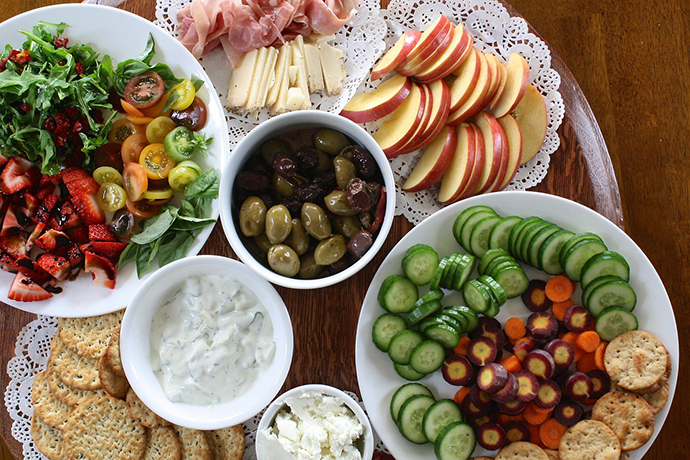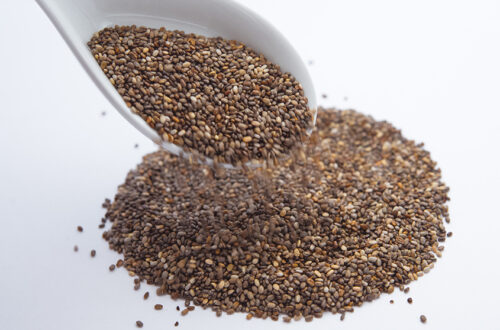
Best eating tips to make your diet healthier
Healthy eating involves consuming the right amount of foods from all food groups so that the human body gets the nutrition it needs and can function normally, depending on lifestyle and activity level. Current government guidelines for healthy eating include consuming five servings of fruits and vegetables per day, reducing salt and sugar levels, and limiting alcohol consumption. Because a poor diet causes many chronic diseases such as blood sugar, diabetes, cancer, and obesity. Collection of some healthy eating tips:
Healthy Eating tips
- Drink plenty of water
- Eat regularly
- Breakfast
- Lunch
- Avoid late dinner
- Enact family meal time
- Fruits vegetables
- Healthy Snacks
- Get to know food labels
- Intake fiber
- Nutrient-dense foods
- Whole grain
- Aware of your portion size
- Variety of food
- Saturated fat
- Serving’s intake
Drink plenty of water

Your body needs to stay well hydrated in order to function at maximum efficiency and properly process all of the nutrients in the food you eat. Our bodies rely on water to regulate temperature, transport nutrients, and oxygen to cells, remove waste products, and much more. In general, the Institute of Medicine’s nutritional guidelines recommends a daily drink intake of 13 cups for men and 9 cups for women for healthy people living in temperate climates. Drink at least 8-9 glasses of water every day. You may need even more water if you are in a hot environment, such as spending a day at the beach in 95 degrees weather or doing sports.
Eat regularly
Skipping meals can lead to uncontrollable hunger, which often leads to overeating and poor nutrition. If you don’t have time to sit down to eat, take something with you. For example a bagel, yogurt, or fruit.
Eat breakfast
You’ve probably heard that before, breakfast is the most important meal of the day. There is no better way to start the morning than with a healthy breakfast. After you haven’t eaten in the last ten hours, your body needs fuel to keep you moving. Add lean protein, whole grains, fruits, and vegetables. Try low-fat milk oatmeal, chopped almonds, and berries, or sprinkle low-fat yogurt and fruit on a toaster. After breakfast, you will have more energy and vitality.
A recent study found that folks who eat breakfast consume, on average, one hundred fewer calories throughout the day than their peers who skipped breakfast. If you’re attempting to lose weight, make sure to own breakfast within the early morning.
Don’t skip your lunch
There are many days when we like to skip lunch. Maybe we’re trying to lose weight and save calories, or don’t have the time and end up working through our lunch break. Make it a healthy and filling meal. Get rid of the boredom of the brown bag with these healthy lunch ideas. They are easy to prepare the evening before and ready to use in the morning. Try whole-grain couscous with chickpeas or black beans, Whole wheat flatbread with chicken, mushrooms, onions, and tomatoes, low-fat cheddar cheese, and sauce. Let’s see what happens if we skip lunch. Blood sugar levels drop, metabolism slows down to make up for the lack of fuel.
Avoid late dinner
In our busy lives, we always tend to postpone dinner at the last minute. Food at night, especially before bed, gets a lot of attention. Limiting or avoiding eating before bed has been suggested both as a weight loss strategy and as an approach to improving health and body composition. Try to eat dinner at least 3 hours before bed. This will work for your body. The ability to digest most foods before bed. Rest for the next 8 hours. If is it necessary to eat late at night or before bed you must know what should you eat!
A strategy that worked well for us is in advance for the dinner for the week and ensuring that you have everything I need at home. Take a few minutes to plan your entire menu once a week. Make a grocery list and buy what you need in the next few days. You can even hang your menu on the fridge so other family members can start eating faster if you are late. Office meeting.
Enact family meal time
Research and studies show that family meals contribute to a healthier diet. Plan to have family meals at least a few times a week in 2021 and for years to come. Make a meal plan at least every week that will help you not only in healthy eating also save your time, money as well Set regular mealtimes that can be the healthy eating tips for you. Turn off the televisions. , Phones and other electronic devices stimulate food conversation that can also protect against unhealthy foods. Involve the children in meal planning and preparation, and use this time to teach them how to eat healthy and healthy.
Choose fruits vegetables snacks carefully
We all need a snack now and then. In fact, it’s a good idea to have two healthy snacks in addition to your three main meals. That doesn’t mean you can go into the snack machine and grab a bag of potato chips or a candy bar. Fruits and vegetables give the dish color, taste, and texture, as well as vitamins, minerals, and fiber. Choose fresh vegetables and seasonal fruits, as well as foods free of preservatives, additives, hormones, antibiotics, and other chemicals. Buy Natural and Organic Fresh options can be hard to find, but frozen and canned foods are great alternatives.
Healthy Snacks
When you’re running and can’t get to the cafeteria or places are closed, it’s always a good idea to have a stock of healthy snacks. Healthy snacks can keep your energy levels up between meals. Combine snacks whenever possible. Try packing cheese, whole or dried fruit, whole-grain mixes, fruits, vegetables, low-fat or low-fat dairy products, lean protein, or nuts. Try low-fat yogurt with fruit, whole-grain crackers with low-fat cheese, or a small serving of nuts with an apple or banana.
Get to know food labels
Have you ever wondered what the numbers on the nutrition panel really mean? Or the difference between low fat and low fat? Check the nutrition information on the food labels. The calories, fat, protein, and carbohydrates per serving are listed on the label to help you decide which foods are best for your needs. The FDA has strict guidelines for the use of terms on food labels. Please note, however, that the portion sizes on the packaging may differ from the recommendations in the food pyramid.
Intake 25-35 grams of fiber daily
- Eat breakfast cereals
- Beans
- Broccoli
- Berries
- Muesli
- Breads or whole grain
- Fruits & vegetables
- Apples
- Peers
- Blackberries
- Avocados
- Popcorn
- Dried fruits such as figs
- Nuts and potatoes
- Oats
- Peas
- Lentils
Dietary fiber is an indigestible carbohydrate found in plants. Whole plant foods like legumes, vegetables, fruits, whole grains, nuts, and seeds are high in fiber. These plant-based foods are excellent sources of fiber. Navy beans and chickpeas. Consuming more fiber every day is linked to less overweight, obesity, and a lower risk of chronic diseases such as certain cancers, heart attacks, and strokes.
Eat nutrient dense foods
What does nutrient density mean? Foods that contain significant amounts of vitamins, minerals, and other nutrients and relatively fewer calories. It is the amount of a specific nutrient such as vitamins, minerals, carbohydrates, proteins, fats, etc. per unit of energy in a given food or per gram of food. It is also an indicator of the quality of the food.
Choose variety of whole grain daily
The main grains are wheat, rice, and corn, while the coarse grains are oats, rye, barley, triticale, sorghum, and millet. Whole grain products are rich in vitamins, minerals, and trace elements, as well as fiber, which is necessary to maintain health and reduce the risk of illness, such as folic acid, iron, zinc, magnesium, niacin, riboflavin, thiamine, etc., and stabilize blood sugar and energy levels. Choose whole grain or bread, beans, oatmeal, brown rice.
Aware of your portion size
Do you know if you are eating well? The amount of food consumed per meal can consist of several servings. Take out the measuring cups and see how close your servings are to the recommended serving size. Using smaller plates, bowls, and glasses will help you control your portions. Use half of the plate for fruits and vegetables and the other half for grains and lean meat, poultry, seafood, or beans. Round off your meal with a glass of low-fat milk or a serving of low-fat yogurt for dessert.
Try to incorporate completely different colors into your diet. These colors correspond to different nutrients and phytochemicals. Eat a variety of foods, one serving of which contains two or more of the required food ingredients. A variety of diets will keep you from bored and ensure that you are consuming many different vitamins and minerals.
Saturated fat
While some dietary fat is important, we tend to ingest too much-saturated fat and need to reduce it. Some vegetable oils, such as coconut and palm oils, contain mostly saturated fat. These are unhealthy fats that increase blood cholesterol. So use them in moderation, if necessary at all, using unsaturated fats, which are healthier fats, generally derived from vegetable sources, and are in a liquid form like an oil, such as vegetable oil, canola oil, and olive oil. Replacing unsaturated fats helps lower blood cholesterol levels. , so it is important to get most of the fat from unsaturated oils.
Serving intake
A standardized amount of food, resembling a cup or an ounce of the associated degree, is used for dietary recommendations or for testing similar foods. We should always eat at least five servings of fruits and vegetables a day, but some people don’t get a single serving at all. Take fruit for a snack, add banana and raisins to your favorite breakfast cereals. Eat a meal for lunch, and get in the habit of tweaking at least one vegetable aspect at dinner every night.
Conclusion
A healthy, balanced diet includes many types of foods, including drinking plenty of clean water and regularly eating foods such as many fresh and dried fruits, vegetables, and starchy foods, lunches, dinners such as whole-grain bread and whole grains, certain protein-rich, high-fiber foods such as meat, fish, eggs, and lentils. A person must regularly eat or drink enough of all of these nutrients in order to grow and stay healthy. If you eat a variety of foods on a regular basis, supplementation is usually not necessary. Two tips for healthy eating are: eating the right amount of food, depending on how active you are, and eating a variety of foods to ensure a balanced diet.
References






